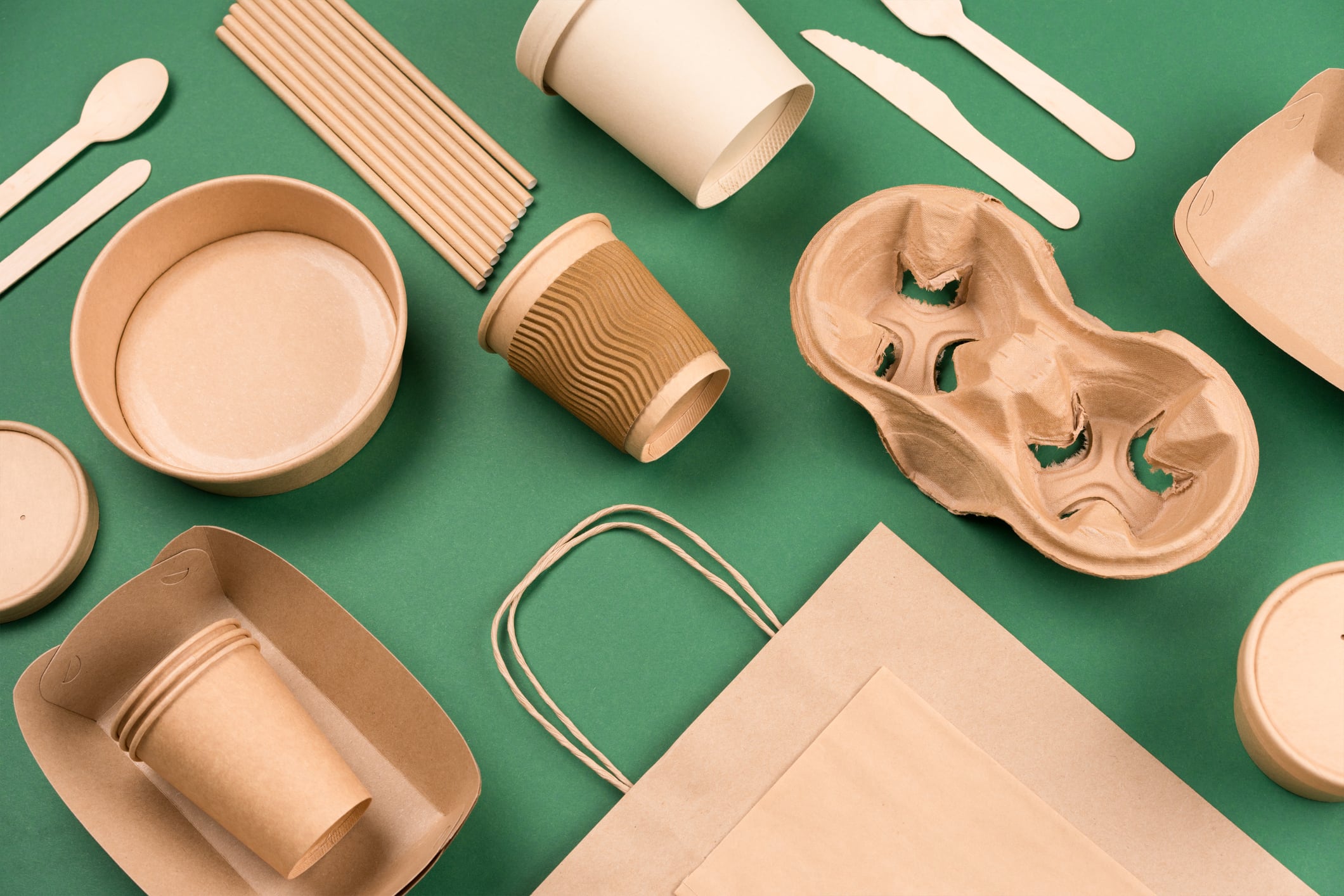According to Towards Packaging, the global biodegradable paper and plastic packaging market was worth $15bn in 2024. Projections indicate significant growth, with the market expected to reach around $40bn by 2034, indicating a compound annual growth rate (CAGR) of 10.20% from 2025 to 2034.
The wider global sustainable packaging market is also tipped for acceleration, anticipated to grow at a CAGR of around 6.2% from 2023 to 2030, driven by several leading trends.
Biodegradable paper and plastic packaging solutions are emerging as critical solutions in the confectionery space, responding to the environmental challenges posed by traditional packaging materials.
Biodegradable materials are designed to decompose naturally through biological processes involving microorganisms such as fungi and bacteria. The decomposition process results in natural elements such as carbon dioxide, water, and biomass, removing toxic residue or leaving minimal amounts.
Non-plastic solutions landscape
“The shift towards non-plastic packaging in confectionery is accelerating due to increasing regulatory pressures, consumer demand for sustainability, and advancements in material science,” says Yogesh Kulkarni, principal consultant at Towards Packaging.
Paper-based solutions are leading the transition to biodegradable options within the confectionery sector, with fibre-based and compostable coatings replacing plastic laminates. Additionally, biodegradable bio-based plastics and compostable films made from cellulose, PLA (polylactic acid) and starch blends are emerging as viable alternatives.
“However, the shift remains challenging due to barrier properties, moisture resistance and supply chain costs,” Kulkarni shares.
Rate of adoption is accelerating
“Brands are focusing on bio-based and recyclable alternatives, with a significant increase in mono-material packaging, which is easier to recycle,” says Kulkarni. Companies are also investing in water-based barrier coatings to improve paper packaging functionality.
Big-name global brands are embracing the transition towards biodegradable packaging. Nestlé transitioned its Smarties line to fully recyclable paper, reducing plastic use by 250 million packs annually. Mars Wrigley has piloted paper-based Skittles packaging, aligning with its goal of using 100% recyclable, compostable or reusable packaging by 2025. Tony’s Chocolonely has also adopted plastic-free, recyclable foil wrappers to minimise waste.
North America is a captive region for the rise of biodegradable packaging and plastic solutions. The market held a significant market share in 2024, with strict regulations and initiatives to decrease plastic packaging waste.
For instance, the US Plastic Waste Reduction Law encourages confectioners to adopt biodegradable and compostable packaging alternatives. Canada has also banned single-use plastics, with the ban pushing companies to explore biodegradable and compostable materials. British Columbia’s Extended Producer Responsibility (EPR), for example, mandates recyclable or compostable packaging, prompting demand for biodegradable options.
Globally, Asia Pacific is the fastest-growing region for anticipated biodegradable packaging activity, fuelled by e-commerce growth, regulatory measures to tackle plastic waste and increasing consumer awareness for sustainable packaging.
Meanwhile, the EU’s Single-Use Plastics Directive is driving firms in the bloc to find packaging alternatives, with more than 70% of confectionery brands actively researching non-plastic packaging solutions. The clock is ticking when it comes to these innovations since The EU Circular Economy Action Plan aims to make all packaging recyclable or reusable by 2030.
Yet packaging obstacles persist
However, moving away from conventional plastics to biodegradable options is challenging. Cost is a significant barrier, with sustainable packaging solutions 20-30% more expensive than traditional plastics.
Due to its relative infancy, environmental-focused infrastructure is also lacking. According to Towards Packaging, today, only approximately 15% of industrial composting facilities worldwide can handle biodegradable plastics effectively.
Limited shelf life and performance capabilities also impede the plastic alternatives uptake and popularity. “Many biodegradable materials lack the necessary oxygen and moisture barriers required for confectionery, leading to concerns about product freshness,” Kulkarni notes.
While innovations and investments are ongoing, global confectioners are not protected from these ever-present biodegradability hurdles. Ferrero is investing in bio-based materials but acknowledges challenges related to cost and supply chain scalability. Similarly, Lindt tested compostable wrappers but faced issues maintaining moisture resistance for chocolate bars.
Environmental packaging formats take off
Several leading formats in environmental packaging have come to the fore in the confectionery sector.
Paper-based wraps with coatings are a popular choice, for example, used for chocolate bars and candy wrappers. Ritter Sport introduced fully paper-based packaging for its chocolate range. Compostable cellulose films derived from wood pulp are used for candy and gum packaging. Alter Eco, for instance, uses compostable chocolate pouches that break down in 180 days in industrial composting.
Bio-based plastics such as PLA and starch blends offer an alternative to their traditional counterparts, as a way to move away from the plastic pollution problem while still benefiting from the plastic-relevant applications. Bio-based plastics, for example, can be used for flexible pouches and flow wraps. KitKat Japan for example, launched biodegradable wrappers made from sugarcane-based plastic for its bars.
Recyclable mono-material plastics retain traditional barrier properties while being recyclable. Mondelez switched to mono-PE films for Cadbury Dairy Milk to reduce packaging complexity. Edible packaging is also a niche and novel but growing solution, with innovations in seaweed-based and protein-based films. Notpla developed seaweed-based edible wrappers for snack bars and chocolates.
Cross sector collaboration
Regulatory support and financial incentives present opportunities to brands in some territories where tax benefits and subsidies are available for companies investing in sustainable packaging.
Some organisations are offering support too. The Ellen MacArthur Foundation’s New Plastics Economy initiative encourages cross-sector and charity collaboration by encouraging global brands to adopt sustainable solutions. Companies such as Unilever, PepsiCo, and Nestlé have committed to lowering virgin plastic use by over 50% by 2025. Meanwhile Ferrero and Mars Wrigley are investing in closed-loop recycling programs to reduce plastic waste.




